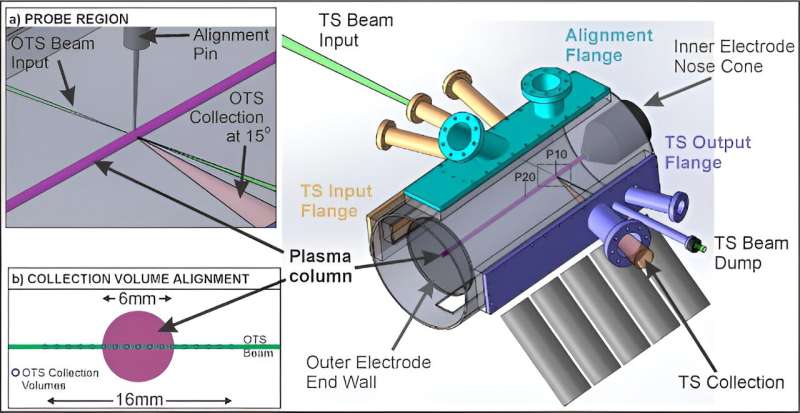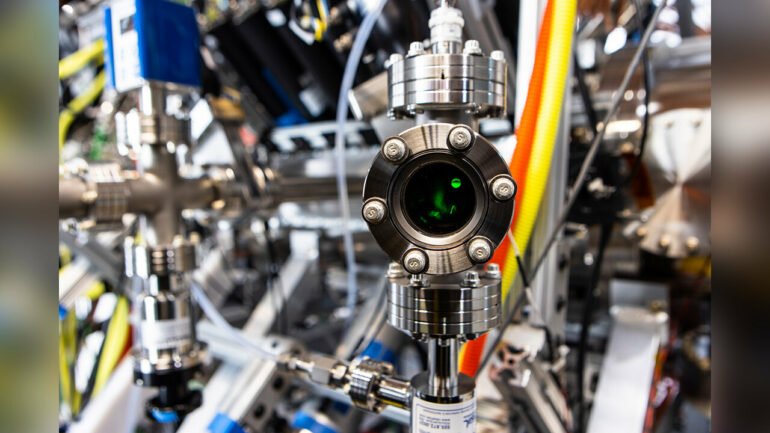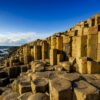Scientists at Lawrence Livermore National Laboratory (LLNL) have reported advancements in understanding plasma pressure profiles within flow-stabilized Z-pinch fusion, a candidate for achieving net gain fusion energy in a compact device.
In collaboration with the University of California San Diego (UCSD), the University of Washington, Sandia National Laboratories and private-sector fusion company Zap Energy, researchers utilized advanced Thomson scattering diagnostics to measure elevated electron temperatures and densities within Zap Energy’s Fusion Z-pinch Experiment (FuZE), based in Everett, Washington.
The team’s latest findings, published in the journal Physics of Plasmas, reveal insights into plasma conditions that coincide with fusion neutron production.
The sheared-flow-stabilized Z-pinch configuration uses electric currents to generate magnetic fields that assemble and compress a flowing filament of plasma: a hot, charged gas. By introducing a sheared-flow velocity within the stream of plasma, scientists aim to maintain stability and prevent disruptions to the confinement process, thereby sustaining the plasma long enough to create meaningful amounts of fusion energy.
“The ability to accurately measure and understand plasma conditions is crucial for optimizing fusion performance and advancing this transformative energy technology,” said Clément Goyon, one of the project’s lead researchers.

Experimental setup of the Thomson scattering diagnostic on the FuZE device. The probe laser, labeled TS Input beam, is entering the chamber perpendicularly to the plasma column to probe plasma conditions 10 cm away from the central electrode. The plastic scintillator detectors are shown as the gray cylinder under the collection flange for Thomson scattered light. (a) Inset is a zoomed-in view of the probe laser, plasma column, and collection angle. (b) Inset shows the 17 volumes probed in the radial direction across the column. © Physics of Plasmas (2024). DOI: 10.1063/5.0209351
The team used a portable Thomson scattering diagnostic. The diagnostic, designed by the LLNL/UCSD team, is transportable to be used in other fusion concepts and could be instrumental in helping new private-sector fusion companies advance their designs.
At Zap Energy, the joint research team employed the diagnostic to probe plasma conditions at different axial locations along the line of plasma within the FuZE device. Moving closer to the central electrode showed the axial plasma columns had higher density and less shot-to-shot variation.
Accessing the characteristics of the column is essential for validating the physics models and demonstrating the experiment’s reliability. Measurements from the diagnostic link the expected performance from simulation and modeling to the actual neutron yield output.
“Our measurements are helping to characterize the performance of fusion-energy concepts and quantify the gap remaining towards net energy gain,” said Simon Bott-Suzuki, a plasma physicist from the UCSD Center for Energy Research who helped lead the research.
“We are able to probe plasma conditions when fusion reactions are happening and directly relate them to expected energy output. These developments are essential for bringing us closer to practical fusion energy solutions.”
The team’s research builds on previous results, reported previously in Review of Scientific Instruments on the Thomson scattering methodology, and in Physical Review Letters on the demonstration of elevated temperatures of 1-3keV during neutron production.
More information:
C. Goyon et al, Plasma pressure profiles in a sheared-flow-stabilized Z-pinch, Physics of Plasmas (2024). DOI: 10.1063/5.0209351
Provided by
Lawrence Livermore National Laboratory
Citation:
Advancements in Z-pinch fusion: New insights from plasma pressure profiles (2024, July 11)



